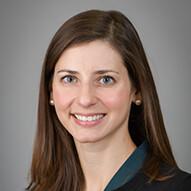Pediatric colonoscopy
A pediatric colonoscopy (co·lo·nos·co·py) includes a long, flexible, lighted tube (endoscope) allowing a gastroenterologist to examine a child's large and small bowel.
What is a pediatric colonoscopy?

A colonoscopy is a procedure where a long, flexible, lighted tube with a tiny camera on the end, called a colonscope is inserted into the rectum and up through the colon (large intestine) and into the very last portion of the small intestine, called the terminal ileum.
Biopsies and polypectomies (removal of polyps) can be done at the same time as the colonoscopy.
A colonoscopy can look for causes of rectal bleeding, anemia, diarrhea, and signs of inflammatory bowel disease (IBD).
What can I expect with a pediatric colonoscopy?
An average colonoscopy takes approximately 60 minutes. Pictures and biopsies of your child's colon will be taken.
Once the procedure is complete your child will be taken to the post-anesthesia care unit or PACU (wake up room) to recover from the procedure. Your child's provider will meet with you in a private conference room to speak with you about how the procedure went.
After your child is awake, you will be escorted to the wake up room. Typically your child will spend about an hour in the wake up room before you are discharged home.
To help avoid post-procedure nausea and vomiting your child should avoid spicy or greasy food as their first meal.
How do I prepare my child for a pediatric colonoscopy?
For your child’s safety, follow these one-day clean-out instructions to get your child ready for their colonoscopy. If the instructions are not followed, your child’s procedure may be canceled. The goal of this one-day clean out is to get your child’s poop (stool) to become a clear liquid. This means that there will not be any poop (stool) pieces (it may have some color but will be mostly clear).
What is my child allowed to eat and drink before a pediatric colonoscopy?
Do NOT eat solid foods of any kind.
Do NOT eat or drink milk-based products like cheese or milk.
Do NOT chew gum or eat candy after midnight the night before the procedure.
What are the prep instructions 1 day before a pediatric colonoscopy?
Step 1: Start clear liquid diet:
Start clear liquid diet in the morning.
Continue clear liquid for the whole day.
Allow your child to drink as much clear liquid as he or she would like.
Have your child drink every 30-45 minutes to stay hydrated.
Note: If your child is on medicine for diabetes, please call the prescribing doctor for instructions on taking their medicine while on a liquid and fasting diet.
Step 2: Take MiraLax®:
At 2 p.m. have your child drink a total of _____ glasses of Miralax prep.
Drink one glass every 15-20 minutes
Do NOT take more than four hours to drink MiraLax.
Stop MiraLax for 30 minutes if your child is sick to their stomach (nausea) or throwing up (vomiting).
Restart MiraLax after 30 minutes
How to mix the MiraLax:
Mix one capful of MiraLax (to the 17 GM line) in 8 ounces of Pedialyte® or Gatorade® (NO RED, BLUE, or PURPLE flavors).
Step 3: Take a stimulant laxative:
At 8 p.m. give _____ Dulcolax® (Bisacodyl) tables(s)/suppository OR _____ Ex-Lax® Chocolate Chew(s).
Call the doctor at ![]() 214-456-8000 if:
214-456-8000 if:
Poop is not clear. This means the colon is not cleaned out and may mean that your child’s procedure may be canceled for safety reasons.
Your child is having difficulty sticking with to this clean-out plan.
Pediatric colonoscopy doctors and providers
 Lauren Lazar, MDPediatric Gastroenterologist
Lauren Lazar, MDPediatric Gastroenterologist
Frequently Asked Questions
What is a clear liquid diet?
Children's Health Resources
One-Day Clean-Out Instructions for a Colonoscopy
Print friendly version - English (pdf) | Spanish (pdf)